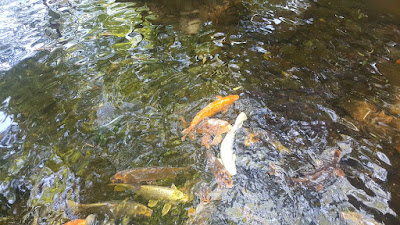Velasquez in Japan
Spain : a mute expression
Madrid, 1736. One has to picture the Puritan Spain, faithful to the pope but dreaming of conquests, that forbids nude paintings but owns more of these than any other kingdom — in private rooms of course. In fact, a wind of change is blowing. But it cannot be explicit. Artists see themselves as ‘creators’ more than simple performers, but they cannot express so openly their very desire of self-expression. So their speech take circuitous roads. And Velasquez, with its witty and refined gave us many examples of this indirect voice.
Hence, this painting of his old friend and sculptor Juan Martínez Montañés, that he had no time to finish. And the buste of the king is left as a simple outline.
Un-finite sketch
Now, let’s imagine something a little foolish : what if that painting was willingly left unfinished ? The outline of the buste is not just an unfinished sculpture, it is also an unfinished painting. So, it does not only belong to the reality of the scene depicted but also to the reality of the painting itself (our reality). In other words : the painting calls for someone to finish the buste.
But what is Montañés sculpting ? It is a buste of the king Philip IV. And where is Montañés looking at ? He is looking at us ? Are we the king ? But as you look closer, you will see that Montañés is actually looking at your left. The king is there, next to us. As for us, we are the painter. It is up to us to finish the painting. And what does the king look like ? That is left to our artistic imagination…
And this is how we, as spectators, become actors of the scene. The art work is only finished by our own effort to represent the king. Through this act, we create an image of the king.
Maybe Velasquez had really no time to finish this painting, but it seems like he is saying « It is I, as an artist, that decides of how Philip IV will be remembered and it is up to you, as artists, to take that power too ! »
From spectator to actor
Painters and calligraphers from China and Japan will tell you the same thing : the emptiness around the paint that is more important than the drawing itself because this is where the imagination wanders. Guests in a tea room are actors of the work of art. They interpret the items and empty spaces, perceive hidden references, question what is present and what is missing from the tea room. They are artists, just like the host, and they often complete with a poem the arrangements left imperfect on purpose.
Whether Velasquez wanted this or not, the imperfection of his piece invites us to a strangely similar kind of exercise. The absent, the face of the king, requires us to question this empty space next to us, this place where Philip IV is posing. What are his traits ? How are we going to finish this painting without betraying the intention of our host painter ? As I was observing this masterpiece in the Hyogo Prefectural Museum where the Prado has sent some works, I felt that two worlds were not so far appart…







Comments
Post a Comment